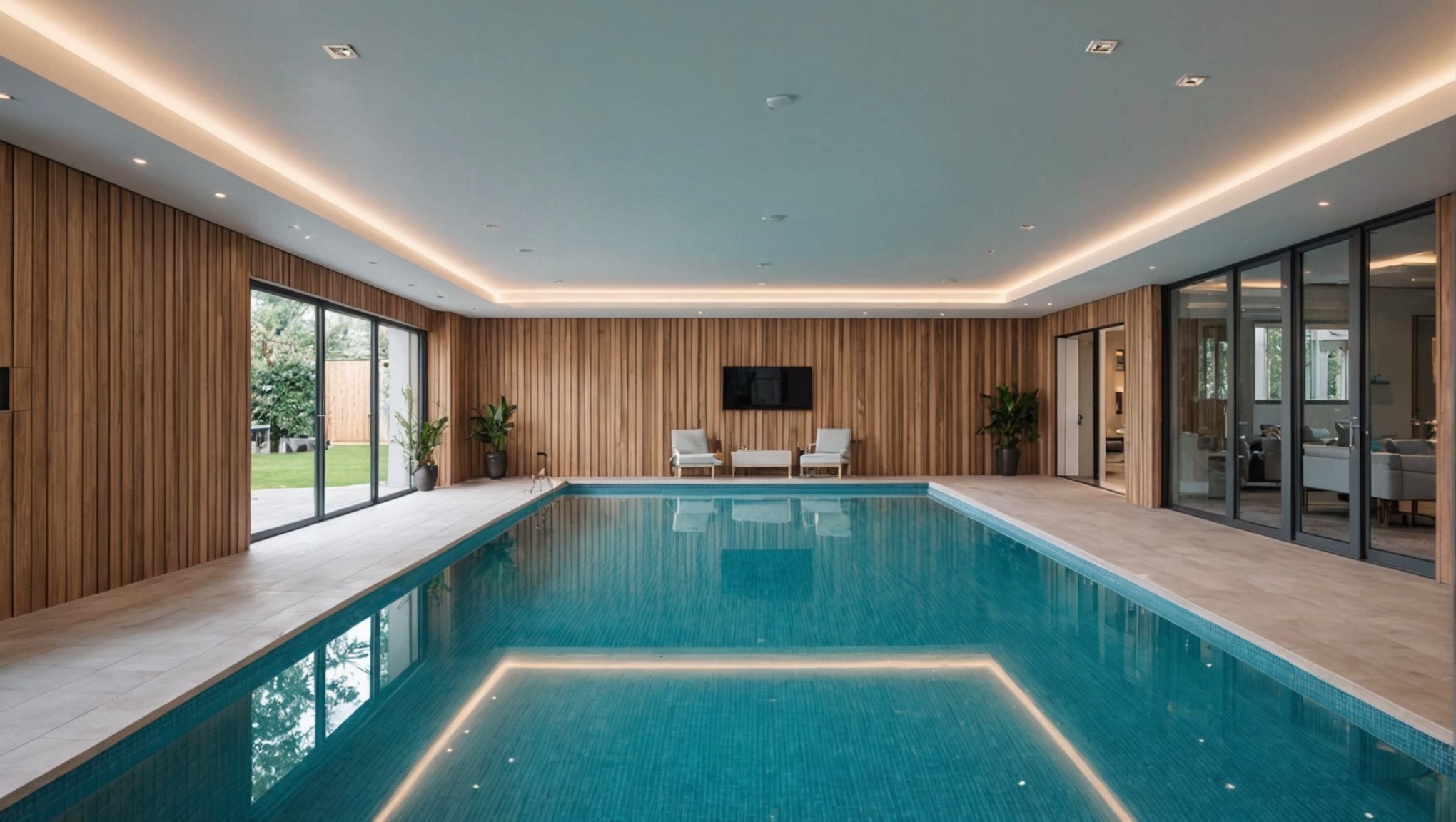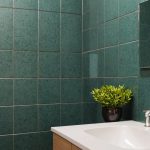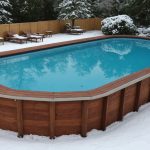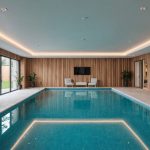An indoor swimming pool is a luxury, an oasis of relaxation in your own home. Yet the echo of splashing water and the hum of the pool pump can disrupt the tranquillity. Soundproofing your indoor pool room can alleviate these disturbances, creating a serene atmosphere where the only audible sound might be the gentle lapping of water against the pool sides. In this article, we’ll explore the various methods of reducing noise and enhancing the acoustics in your indoor pool room.
The Importance of Soundproofing Your Indoor Pool
Indoor swimming pools bring a slice of paradise into your home. They serve as a private sanctuary where you can unwind, exercise, and entertain. However, the joy of having a pool indoors can quickly turn into a nuisance when the noise level becomes unbearable. The echoing sound of splashing water and the constant humming of the pool pump can make the pool room less enjoyable, even stressful at times.
Soundproofing your indoor pool room is thus an essential aspect of your home design. The process involves using various methods and products to reduce sound transmission. It not only involves insulating the walls and ceiling but also managing the noise from the pool pump and incorporating the right materials into the room design.
Insulating Your Pool Room Walls
To start the soundproofing process, take a look at your pool room walls. Walls are significant conduits of sound, so good wall insulation is paramount. Soundproofing your walls will not only keep pool noise contained within the room but also prevent outdoor noise from entering, creating a quiet, peaceful space.
Consider using dense, sound-absorbing materials like mass-loaded vinyl (MLV) or resilient channels. MLV is a thin yet heavy sheet-like material that effectively blocks sound. Resilient channels, on the other hand, create a gap between the wall and the drywall, helping to reduce sound transmission.
Also, consider the installation of acoustic plasterboard. This dense material is made to reduce noise transmission. It can be used in combination with other soundproofing materials for enhanced effectiveness.
Soundproofing the Pool Room Ceiling
Next, shift your focus to the pool room ceiling. Soundproofing the ceiling can further reduce noise transmission and improve the room’s acoustics.
Similar to wall insulation, you can use resilient channels or MLV on the ceiling. Additionally, consider installing acoustic ceiling tiles. These tiles can absorb sound waves, reducing the echo within the room.
If your pool room design allows, introduce a dropped or false ceiling. This type of ceiling design provides an additional layer of insulation, reducing both airborne and impact noise.
Managing Pump Noise
Pool pumps are necessary for keeping your pool clean, but they’re often a significant source of noise. Therefore, managing pump noise is crucial for soundproofing your indoor pool room.
One method is to enclose the pump in a soundproof box. These boxes are designed to absorb sound, making the pump operation quieter. You can purchase a ready-made box or construct one yourself using sound-absorbing materials.
Another method is to replace your existing pool pump with a quieter model. Modern pumps are designed to operate with less noise while retaining their efficiency.
Choosing the Right Materials for Your Pool Room Design
Lastly, the materials you choose for your pool room can greatly influence its acoustics. Hard surfaces, such as glass and tile, can cause sound to echo, amplify noise.
Opt for materials that absorb sound rather than reflect it. Carpets, for instance, can be used to reduce noise levels. While not typically seen in pool rooms, there are moisture-resistant options available that suit this environment.
Consider installing drapes or curtains on large glass windows or doors. These can absorb sound and can be drawn closed when the pool is in use. Use of plants can also contribute to noise reduction. Not only will they add to the room aesthetics, but they also absorb a considerable amount of sound.
Remember, creating a tranquil environment in your indoor pool room is not a daunting task. With the right approach, materials, and products, you can reduce noise, enhance acoustics, and immerse yourself in a serene, soothing space.
Controlling Pipe Sounds and Heat Pump Noise
The heating system for your indoor pool can be another significant source of noise. The heat pump and associated piping can create a constant hum or whirring sound that can disrupt the tranquillity of your pool room.
Controlling pipe sounds is essential for a complete soundproofing solution. This involves using specific sound insulation materials to dampen the noise produced by the pool’s heating and filtration system. One of the most effective soundproofing materials for this task is the quiet batt. This insulation material is known for its excellent sound absorption qualities, making it ideal for reducing heat pump and pipe noise.
The quiet batt is designed to fit snugly between wall studs, effectively covering piping and reducing sound transmission. It acts as a sound deadening material, absorbing the noise produced by the heating system and preventing it from reaching other areas of your home.
In addition to pipe soundproofing, consider investing in a quieter heat pump. Like modern pool pumps, current generation heat pumps are designed to operate more quietly than their predecessors. A quieter heat pump will have less of an impact on your room acoustics.
Lastly, consider using a quiet barrier around your heat pump. This is a special type of barrier soundproofing material that can effectively block noise from the heat pump, further ensuring a peaceful environment in your pool room.
Using Acoustic Foam for Enhanced Soundproofing
Acoustic foam is another soundproofing product that can be highly effective in reducing noise in your indoor pool room. Acoustic foam panels are designed to absorb sound waves, reducing echo and improving room acoustics.
Acoustic foam is typically applied to walls and ceilings, but it can also be used on floors and around windows or doors. A top layer of acoustic foam can significantly reduce noise levels and improve the overall acoustics of the room.
Acoustic foam panels are available in various sizes and densities, allowing you to choose the right product for your needs. While thicker panels will offer better sound absorption, even thinner panels can make a significant difference in reducing noise levels.
Remember, the goal of using acoustic foam is not to create a completely silent environment, but to significantly reduce noise levels, making your swimming pool room more peaceful and relaxing.
Conclusion
The echo of splashing water and the hum of the pool pump do not have to be constant companions in your indoor swimming pool room. With the right soundproofing materials and methods, you can significantly reduce noise levels, creating a peaceful and serene environment.
Consider using sound-absorbing materials like mass-loaded vinyl, resilient channels, and acoustic plasterboard on your walls and ceilings. Manage pump noise by enclosing the pump in a soundproof box or replacing it with a quieter model.
Remember to control pipe sounds and heat pump noise through the use of quiet batt insulation and quiet barriers. Also, consider enhancing the soundproofing of your pool room with the use of acoustic foam panels.
By incorporating these soundproofing products and methods into your pool room design, you’ll be able to enjoy the serenity of your indoor pool without any unwanted noise disturbances. After all, your indoor swimming pool should be a sanctuary of relaxation, not a source of stress.
















